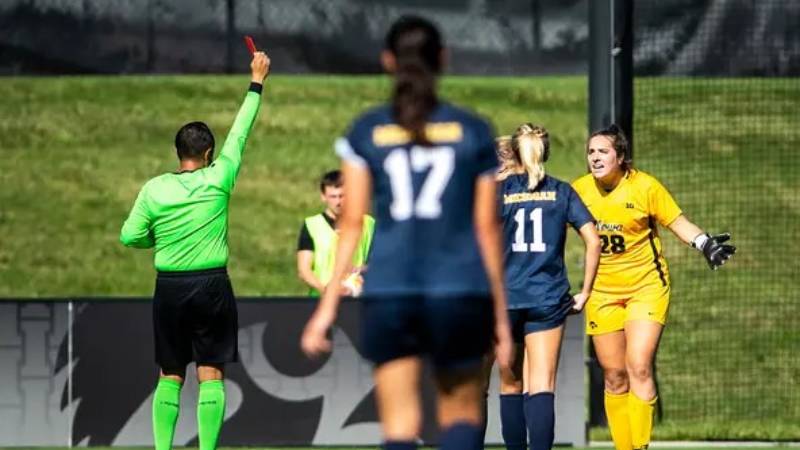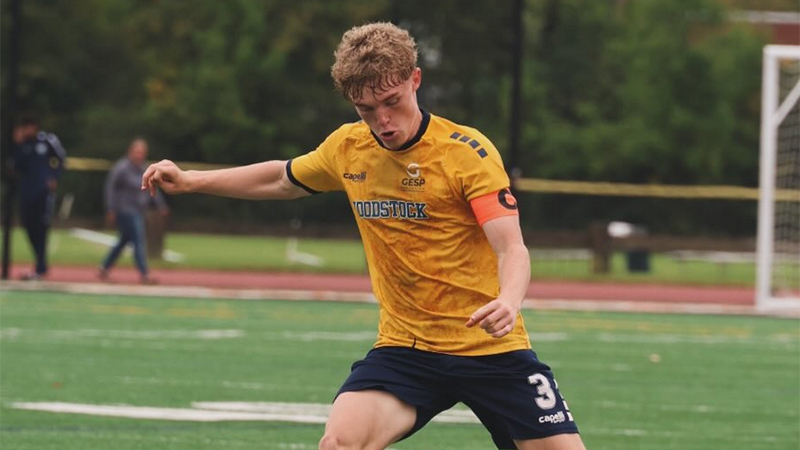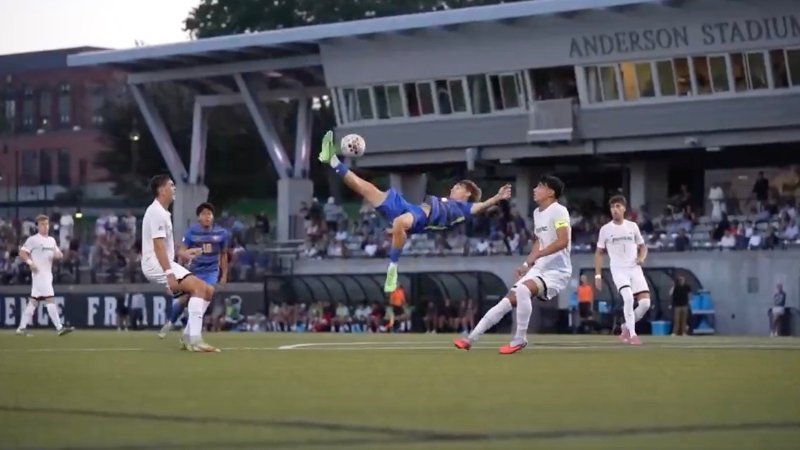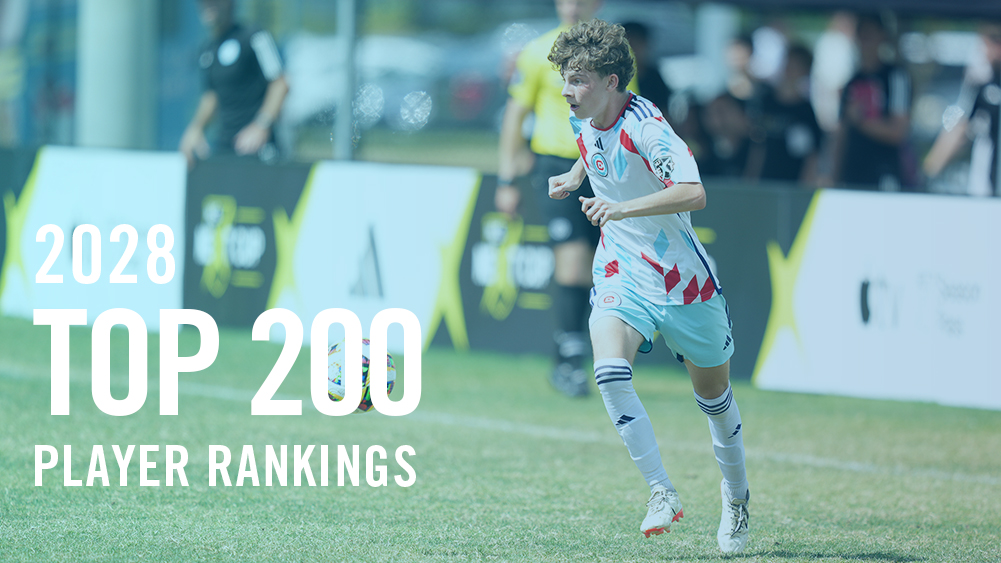VAR Isn't What You Think in College Soccer

In the last minute of Maryland’s game against Northwestern, with the score locked at 1-1, Josh Bolma scampered after a long ball. He took a touch before being bundled over in the box. But the referee — 30 yards behind the play — didn’t point to the spot. Northwestern dutifully allowed the seconds to dwindle and snatched a point against the conference leaders.
The Maryland bench was incensed, a few players drawing the telltale box requesting video review. And it probably had a point. Broadcast replays suggested that Maryland should have been awarded a penalty. But the play contested by the Terrapins wasn’t reviewable. Such is the nature of video review in college soccer, a concept narrow in scope — and by extension, occasionally lacking in impact. And as it enters its sixth year in the game, its positive impacts have been clear, but the lack of coverage in some areas has become a gripe for coaches.
The first thing that NCAA officials stress about video review in college soccer is that it is not the VAR found in the professional game. College soccer is lower budget and in some ways entirely different than its glamorous pro counterpart. There is not another referee camped out in a van or waiting behind a computer desk. There are no lines drawn to point out the fine margins of an offside call. Instead, all reviews are conducted pitchside, with the on-field official often peering at an iPad or laptop screen — relying on the television feed to make a decision.
“It's a nice kind of safety net to have if you get a big decision wrong. But it doesn't replace our traditional function of getting it right on the field,” said Rich Grady, the NCAA secretary-rules editor for soccer.
The types of plays that can be reviewed are accordingly narrow. Officials can determine whether a foul occurred inside the box, or whether a ball crossed the goal line. They can also identify which players were involved in a fight, or determine the severity of a red card — which will, in turn, dictate the length of a resulting suspension. But, crucially, video review can only be used if an on-field decision is made. In other words, a missed call — without the referee blowing the whistle — remains overlooked.
And it's there that the points of contention emerge. The NCAA doesn’t stipulate that video review has to be used in every game throughout the nation. It has — by circumstance rather than design — become a part of the game dictated on a conference basis. The Big Ten, for example, has embraced it wholeheartedly. But the similarly big-budget SEC has opted not to operate video review in conference matches.
Such discrepancies branch beyond the reach of conference play. Inter-conference clashes lie in the gray area — with colleges having the choice to use the technology on a game-by-game basis. It’s an issue that has developed concerns over a plethora of imaginary scenarios, with missed decisions or wrong calls potentially having massive ramifications if video replay isn’t available.
“A lot of growing pains have come with [video review]. I don’t think we are at the level, that we want it to be and need it to be,” said Ryan Cigich, the NCAA national coordinator of soccer officiating.
Still, when video review came into effect, it wasn’t supposed to be the overarching force that decided games, Cigich said. Rather, it was designed as a tool of clarification and, in effect, decrease the number of formal complaints the NCAA received from disgruntled coaches. Common gripes, such as yellow cards handed out to wrong players, and lengths of suspensions for straight red cards, were becoming an issue. In 2015 and years prior, the rules department for college soccer was regularly subjected to official protests regarding such issues.
In light of that, college coaches voted for the steady introduction of video review, with a focus on decisions determining whether a red card was determined “violent conduct” and cards handed out to the correct individuals — with fears over suspension for key players heightening. That request was swiftly approved by a body willing to modify some imperfections.
And it worked. Video review was introduced in 2016 to significant success. Officials felt comfortable using the technology, Cigich said, and minor refereeing faults were limited. Formal protests decreased, too.
But then, perhaps inevitably, the issues started. Some conferences embraced video review, while others snubbed it. Some teams wanted the technology to be as accurate as possible, employing a screen, set far away from the team’s benches, where referees could ponder over a call. Others provided a laptop, set up right under the nose of watchful coaches.
“If all of their sites and all of their fields don't have a consistent number of cameras or consistent equipment, availability, then they haven't fully gotten on board yet,” Cigich said.
There are financial implications, too. Though most of Division I college soccer is streamed — or has cameras on site — relatively few have the multi-angle replays so often used in the professional game. Some don’t even have the necessary equipment to offer a slow motion replay, especially if the game is only being streamed for a school site, or isn’t fit for a bigger network.
Coaches at bigger schools argue that financial discrepancies can be overcome, especially with the depths of their financial resources. But equity remains something of a problem nationwide.
“Any review is only as good as the video evidence you have to get it right,” Maryland coach Sasho Cirovski said.
When Texas A&M played at Ohio State on September 4, the Buckeyes had a sophisticated camera system available. There were four lenses in each goal, multiple angles on the broadcast and proper equipment pitch side for video review.
But before the game, coach G Guerrieri was told that the cameras wouldn’t be operational.
“We’ve talked about in our league, if a place has the capability to do video replay, we should allow that to happen,” Guerrieri said. “And we’ve gotten ‘nos’ on that.”
It was a point of frustration for a coach who has fought for video replay to be available in the SEC. Coaches are nearly unanimously in favor of the technology, Guerrieri said — but the conference has always tabled any efforts to mandate it league-wide. Guerrieri and his counterparts have even gone into specifics. They want penalty review, goal line technology, the bigger decisions that can — and have — impacted games.
“Our jobs, our livelihood is dependent on the referee getting things right,” Guerrieri said.
In the 37th minute of Virginia’s 3-1 loss to Pitt on September 30, Kome Ubogu went down in the box. The forward rolled around in agony, reaching for his foot. The referee reacted accordingly, pointing to the spot immediately. But Pitt was incensed, gathering around the official in protest — with a handful of players pleading for video review.
Under current rules, though, the official was unable to peer over his decision again. Had he done so, he would have probably found that Ubogu made little — if any — contact with a Pitt defender. It was a penalty sold, not earned.
It was emblematic of one of the biggest holes in the system. Pitt’s Ambrose Field has numerous broadcast cameras and replayed the incident four times on its live broadcast, certainly sufficient footage to show that the penalty should have been overturned. But had the same game been played at a smaller field, with lesser facilities, an additional check would be impossible.
The expansion of reviewable plays, then, is far from easy. NCAA officials are making efforts to mandate that video review be used whenever the right technology is available. But enforcing teams to buy in has proved difficult.
So, for all of the amended mistakes and reduced complaints, it seems college soccer might have to continue to embrace some human error for the foreseeable future.
Headlines
- Recruiting Roundup: December 22-January 4
- Vote for Men's College Soccer Best Goal
- 2026 Women's Division I Transfer Tracker
- Vote for Women's College Soccer Best Goal
- 2025 TDS Men's College Goal of the Year
- Club Soccer Player Rankings: Boys 2028
-
Top Uncommitted 2026 Boys Players

- TDS Fall High School Boys Best XI
- TopDrawerSoccer TeamRank Update - Boys
- TDS Fall High School Girls Best XI



